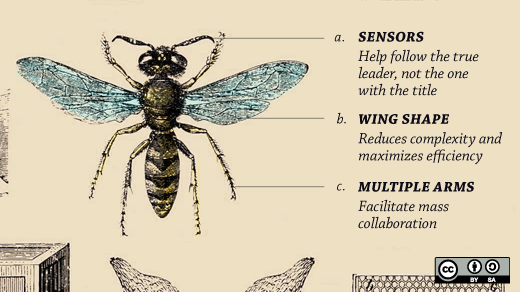Whether in the US or abroad, most everyone is familiar with American Idol. While not an open source project or community, American Idol is a good example of the power of participation, and how understanding this power and providing value can be profitable. American Idol has perfected the art of inspiring millions of people to work together toward one end goal—and the show has made millions. So, how do you get people to participate in something for free and make money from it?
From tens of thousands of open source projects, Red Hat has figured out how to harness the power of the open source development model and bring the best ideas to more than 90% of current Fortune 500 companies. We do this by supporting successful community projects and creating technologies that businesses and governments are secure using. As open source projects, the core components of our technologies is free; our job is to ensure they are stable and secure and that their implementation is supported for business use.
But, if you’ve never participated in an open source project or explored an open source community, it can be difficult to conceptualize what that really is, what that really means. So, let’s start with the basics. The open source world is all about participation—inspiring others to participate in projects and to help find the best solutions.
How to get people to participate
#1—There has to be a compelling reason that generates participation.
American Idol is more than just a big talent show. It unites people around a common goal and has in turn changed the way the music industry sources new artists. It puts the work of finding talent in the hands of music fans. And, it works because the premise is fun and interesting: Why let behind-the-scenes music industry 'hit-makers' choose the next star when you can do it yourself?
The same can be said of the open source community. Participants in open source decided they wanted a hand in the technology being created. They didn’t want to trust all of the work to the engineers sitting behind the walls of proprietary software companies.
Whether your business is to look for the next breakout pop star or to write software that runs nuclear submarines, if you can create a compelling reason for people to participate, they will.
#2—Find a way to generate value... for all parties involved.
The contestants, who want publicity and a chance at a record deal, voluntarily perform for free.American Idol profits from the participation itself. If viewers want to vote on their favorite, they have to tune into the show to see the performances. American Idol makes money from the millions of dollars on advertising and commercials that run throughout the show. All parties in this model find value in participating.
The same could be said for Red Hat. Like American Idol contestants, most open source contributors do so voluntarily. They’re participating because they believe in a larger mission—that technology should be open and shareable. Businesses use open source technologies to tackle their IT challenges because these technologies are agile and flexible. However, businesses want to have confidence that the technology they run is secure and works properly. Red Hat adds value by providing businesses with stable, supported solutions that are dependable and reliable. That is how Red Hat is able to make money selling a free product. All parties find value.
#3—Participation results in more than just a win-or-lose proposition.
One of the interesting things about American Idol is that you can come in second or third, but still win. Second- and third-place winners have sold millions of records. If you have talent and appeal to enough viewers, you will sell the music you release.
The same can be said of open source. There are tens of thousands of viable open source projects today, with hundreds of thousands of people contributing code. Not all of these projects will roll up into a standalone software offering, but elements of these projects can be found throughout open source solutions, including Red Hat’s. Participants in open source projects know their code may not show up in a commercial-grade product. But regardless, their code has helped influence the direction of projects, and, ultimately, the face of future technologies.
However, a word of warning. While American Idol has been largely successful, it has hit a bumpy road lately. Viewership has declined and judges are leaving. This speaks to the fragility of participation. It doesn’t matter if it’s an open source project or American Idol; just because people have participated in the past, doesn’t mean they will participate in the future. Engagement has to continue to be stoked and nurtured for participation to be sustained.
While not everyone is faced with the unique challenge of selling a free product, most businesses want to increase participation—be it with customers, partners, or with their own associates.
If you want to encourage participation, ask yourself these questions:
- Is there a compelling reason for people to contribute and participate?
- Does your business model offer opportunities for engagement?
- Do all participants find value in contributing?
If you can answer those questions with a "yes," you could be on the right track to fostering participation. Ultimately, I believe that business models that harness the power of participation will do well in this information-rich economy.






Comments are closed.